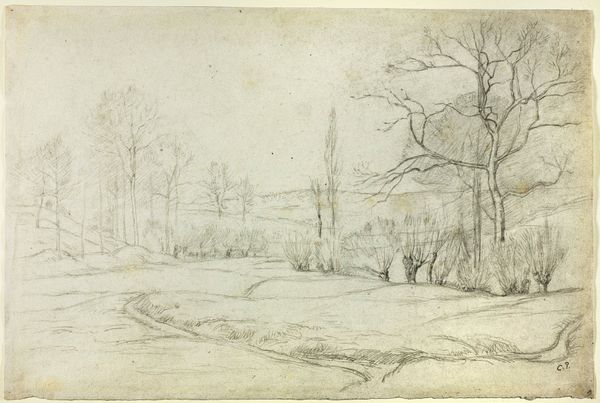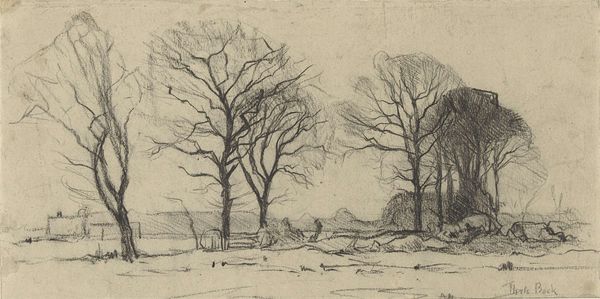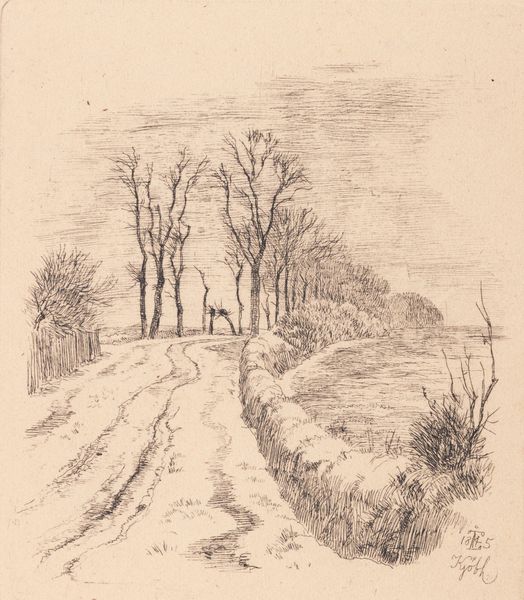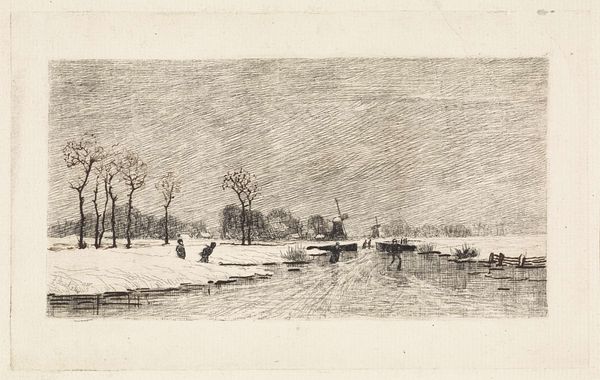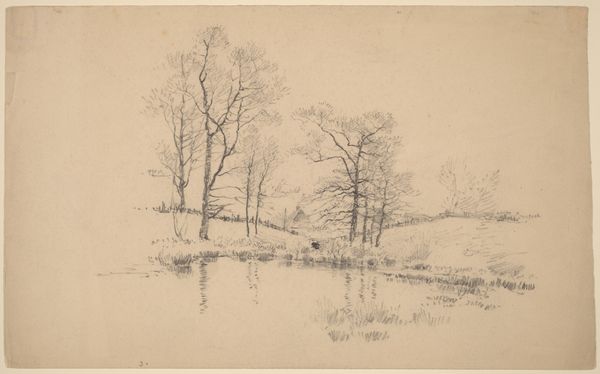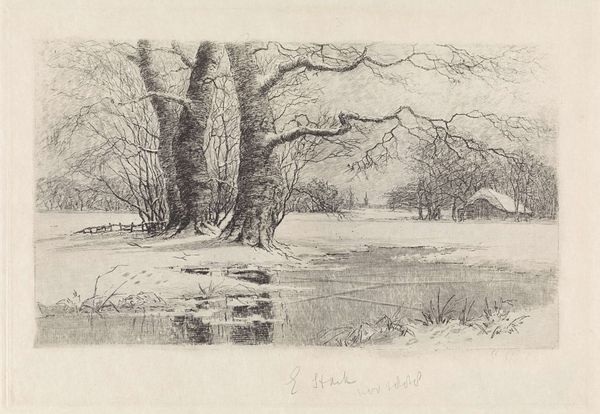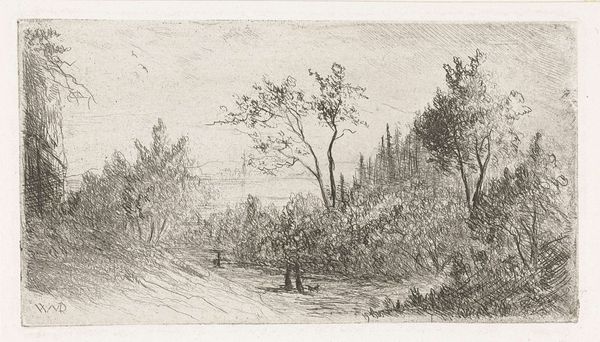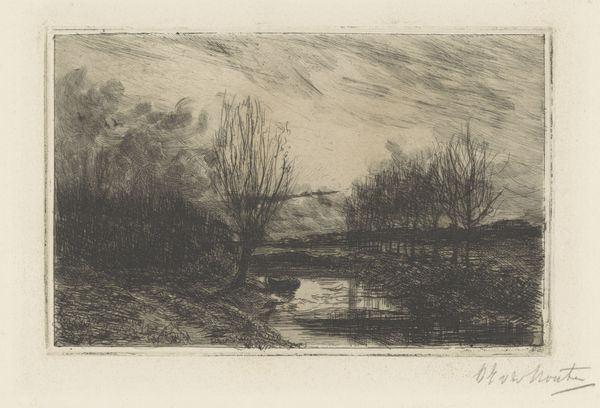
drawing, pencil
#
pencil drawn
#
drawing
#
impressionism
#
pencil sketch
#
landscape
#
pencil drawing
#
pencil
#
realism
Dimensions: height 295 mm, width 465 mm
Copyright: Rijks Museum: Open Domain
Editor: This is Camille Pissarro's "Landschap met beek," a landscape with a stream, created in the 1860s using pencil. It has this quiet, contemplative mood to it, like a secluded corner of the world. What's your interpretation of this work? Curator: For me, it speaks to the complicated relationship between humans and the land during this period. Think about the social unrest of the mid-19th century, the rapid industrialization. Landscapes like this offered an escape, but even this 'natural' scene is traversed by a road – a marker of human intervention and perhaps, exploitation. Editor: Exploitation of natural resources? That wasn't something I immediately considered with this piece. Curator: Absolutely. And who benefits from this road? Is it accessible to all, or does it primarily serve the interests of landowners and the wealthy? The landscape genre often masks underlying power dynamics. The muted tones even suggest a weariness, as if the land itself is exhausted. What do you think of the placement of the road, winding its way through the landscape like that? Editor: I hadn’t thought of that. I found it charming, like a quiet, easy hike, but maybe I was projecting! The road seems to dominate the composition, cutting through the natural landscape quite boldly. It also makes me think about accessibility and how that influences the viewers’ experience of the space. Curator: Exactly! Pissarro’s landscapes, even seemingly tranquil ones, are embedded within the political and social realities of his time. Recognizing this tension between idealized nature and the imprint of societal forces enriches our understanding. Editor: That definitely makes me see it differently. Thanks! It's made me reconsider how landscapes aren't just pretty scenes, but reflections of the power structures that shape our world.
Comments
No comments
Be the first to comment and join the conversation on the ultimate creative platform.
